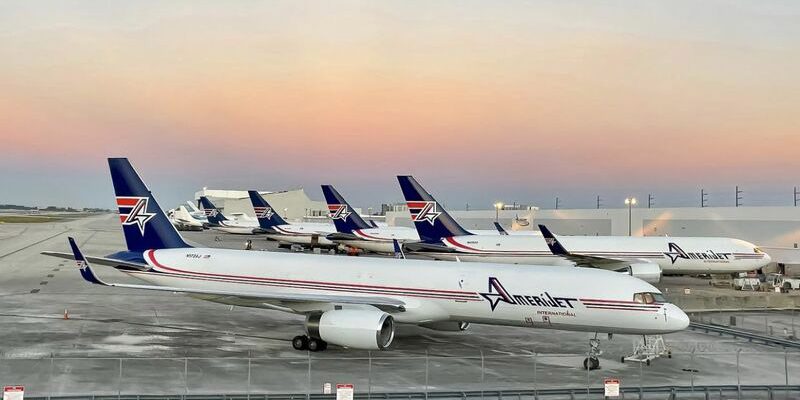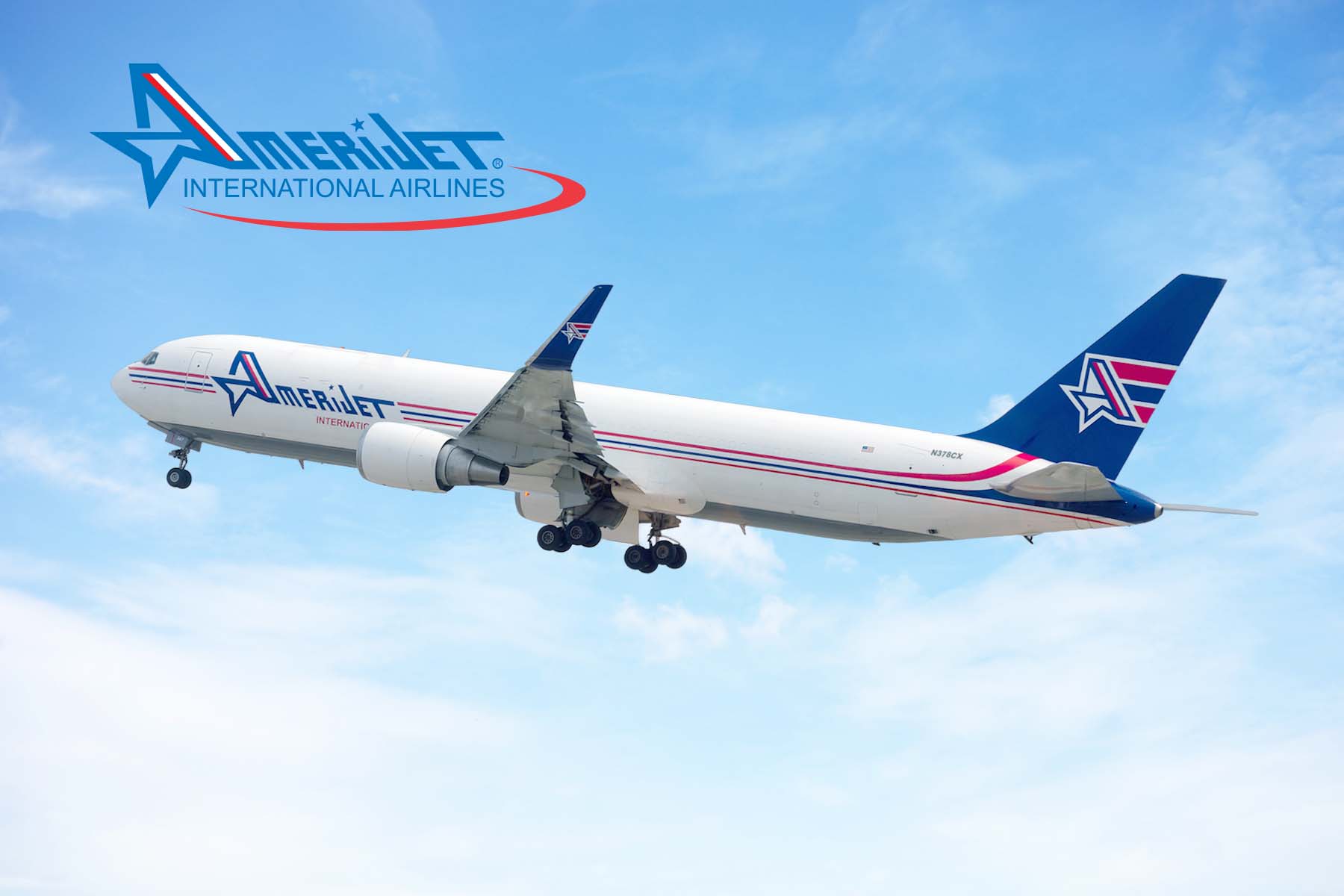Amerijet looks to the horizon as its fleet expands
01 / 06 / 2022

Tim Strauss
Amerijet has confidence in the continued growth of air cargo. The Miami-based airline has been rapidly expanding its fleet in 2022 and chief executive Tim Strauss is certain there is enough demand to fill the aircraft.
“It is going to be a good long run for air cargo,” Strauss says. “It is a great time to be in the business.
“There has never been this big a change in the industry – everyone knows what supply chain means now.”
Strauss is certainly in a good position to comment on how the current market compares with the past, given his extensive experience.
Strauss started his career in the industry at Purolator Courier in the US and held several senior roles at logistics firm Emery Worldwide.
From there he joined Northwest Airlines as vice president of global operations for cargo when the carrier was interested in the express model and operated 18 Boeing 747 freighters across the Pacific.
Next, he moved to Delta, prior to it buying Northwest Airlines, in charge of global operations.
Strauss then took a series of air cargo consultancy roles before joining Hawaiian to head up its cargo business. He next held the top job in cargo at Air Canada before joining Amerijet in mid-2020.
His current challenge in managing the arrival of several new aircraft.
The carrier has taken delivery of a total of six B757 freighters this year and next year the carrier will add five B767s.
The first of the B757s began operations on March 8 after a slight delay in adding the aircraft to the Amerijet certificate due to pandemic backlogs.
The B757 additions mean that Amerijet’s fleet now stands at 20 freighters. When the B767s are delivered, the carrier will operate 25 freighters; 19 B767s and six B757s.
Strauss adds that the carrier is in discussions over another four aircraft that could join the fleet next year although he cautions: “We’ll see how that one plays out.”
To highlight the speed of growth, Strauss points out that around 20 months ago the airline was operating with eight aircraft in its fleet.
“Going from eight to 25 aircraft is a 300% increase so we’ll want to absorb that,” he says.
Internal investment
Strauss adds that along with the new aircraft, the company has also had to recruit flight crew and invest in systems and infrastructure.
Strauss says that recruiting flight crews was difficult – given the training cycle and recruitment process – but not as challenging as would be expected given pilot shortages.
Asked about how Amerijet will utilise the aircraft, Strauss explains: “The core of our business has been flying through the Caribbean and Latin America region out of Miami and we have recently extended that into Europe, into Brussels.
“That will continue to be the core and some of these new aircraft will go in there as we have been using outside lift that is pricey in the current environment, so we will replace some of that.
“We also be flying on an ACMI and CMI level and the rest of the aircraft will go there or will do on-demand charters depending on what the demand is at the time.”
The airline counts the large integrators amongst its North America customer base, flying for them into Liege and Tel Aviv. It also carries postal volumes in the US.
“We are just looking to continue to expand where the environment will continue to let us expand,” says Strauss.
“We think Europe has a lot more to offer us,” he explains. “Miami is the largest export location in the US and a lot of people want to get to the regions we serve and those aren’t the popular widebody passenger destinations.
“So if you are going to go there you need to have a secondary channel and rather than some other carrier flying it over to Miami and us taking it the last few hundred miles, we think it makes more sense for us to control the journey right from the beginning and control the experience for the customer all the way through.”
The airline also recently applied to begin flights to China.
Strauss adds the B757s, which are smaller than its existing B767s, will allow Amerijet to offer higher frequency services into the Latin America and Caribbean markets.
Meanwhile, the oversize engines sported by B757s mean they can be used into high altitude airports, such as Lema in Peru.
The B767s, meanwhile, are good for e-commerce but also larger shipments.
Strauss explains: “B767s are a picture perfect aircraft for e-commerce because of its cubic capacity.”
He adds: “The wider door gives us opportunities for military flying – we do quite a bit for the US government – but also oversize shipments that want to go into places like Trinidad which is an oil drilling and exploration location.”
Market competition
While there is no doubt the freighter market is booming at the moment, the growth has attracted new players to the market and existing companies have also been looking to expand.
These investments have led some to question whether air cargo could find itself with excess capacity in the coming years.
“We think that demand is going to continue to go up at a very high pace,” Struass says.
“Major players in the advisory and consulting world say that the trajectory of demand will outpace capacity at twice the level until 2030.
“In the region we serve with our scheduled network – US-Latin America – it is growing even faster.
“Also one of the major integrators is expecting e-commerce to grow by 10% a year in each of the next five years.
“All that business has to go someplace and means that 450-500 aircraft will need to be launched.
“We think that it is a good market and we want to diversify. We have been focussed in our region and we think that now is the time to diversify our business.”
Strauss also thinks that some of the current capacity will come back out of the market as rates reduce and passenger demand picks up.
For example, the passenger aircraft operating on cargo-only duties will at some stage return to passenger operations.
Long-term growth?
Strauss adds that there was a trend for some of the passenger aircraft being added to the market pre-pandemic to have minimal cargo carrying capacity, such as the A321NEO on the transatlantic, which should help keep freighters in demand.
Strauss adds that there could be lasting structural change in the passenger market that benefits freighter operators.
“On the long-haul markets, 75-100% of their profits come from the front cabin. Are people going to make Zoom and Teams calls for 10 out of their 12 international business trips and just go every six months to visit there customers in person?
“There are a lot of unknowns but it is not going to go back to what it was. That we can feel pretty confident about.”
Another market development that has been beneficial for freighter operators is customers willing to sign longer term deals as they look to offset supply chain instability and secure capacity.
“We have done a few long-term deals and we have four or five long-term deals in discussion. “People are willing to do that because they don’t want you to walk away from them.
“Freight forwarders also don’t want to get left on the side lines and are willing to contract long-term aircraft with you so they don’t lose their supply chains.”
Strauss also doesn’t expect nearshoring to impact the air cargo market.
He explains that while companies may look to diversify their production lines, they are likely to do so by re-shoring to seven or eight different countries to mitigate risk.
While Amerijet has been investing in new aircraft, it has also updated its systems as part of its expansion.
Most recently, Amerijet began operating on the SmartKargo platform. It has also implemented a new finance system, a new crew scheduling platform and a system that helps reduce fuel consumption and emissions output.
















